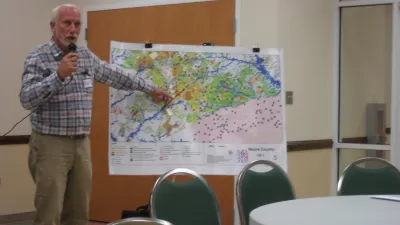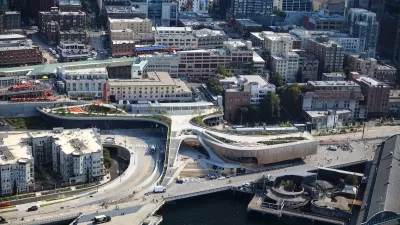Plan documents tend to be static, long, and—let's face it—boring. See how three planning organizations started thinking outside the PDF box to encourage more informed citizen participation.

Anyone who has read an analysis on transportation alternatives or a report on downtown growth potential can understand why these types of documents aren't generally at the center of public attention. But plan documents contain important information that can help citizens become informed participants rather than passive (or aggressive) bystanders. In this age of technological wonders, there has to be a way to transform plan documents into engaging tools.
Chris Haller writes, "Believe it or not, plan documents actually CAN be engaging. The problem is not with the information itself, but rather with the presentation of it. People want to be drawn in, not forced to wade through long, text-heavy pages in search of points that are relevant to them. People want to experience information, not just read it. And if the content can be accessed on-the-go, quickly and easily, that’s a big plus too. Organizations that go the extra mile to engage the public through dynamic plan documents will reap the benefits of a more interested and involved audience."
FULL STORY: 4 Steps to Highly Engaging Plan Documents

Maui's Vacation Rental Debate Turns Ugly
Verbal attacks, misinformation campaigns and fistfights plague a high-stakes debate to convert thousands of vacation rentals into long-term housing.

Planetizen Federal Action Tracker
A weekly monitor of how Trump’s orders and actions are impacting planners and planning in America.

In Urban Planning, AI Prompting Could be the New Design Thinking
Creativity has long been key to great urban design. What if we see AI as our new creative partner?

King County Supportive Housing Program Offers Hope for Unhoused Residents
The county is taking a ‘Housing First’ approach that prioritizes getting people into housing, then offering wraparound supportive services.

Researchers Use AI to Get Clearer Picture of US Housing
Analysts are using artificial intelligence to supercharge their research by allowing them to comb through data faster. Though these AI tools can be error prone, they save time and housing researchers are optimistic about the future.

Making Shared Micromobility More Inclusive
Cities and shared mobility system operators can do more to include people with disabilities in planning and operations, per a new report.
Urban Design for Planners 1: Software Tools
This six-course series explores essential urban design concepts using open source software and equips planners with the tools they need to participate fully in the urban design process.
Planning for Universal Design
Learn the tools for implementing Universal Design in planning regulations.
Appalachian Highlands Housing Partners
Gallatin County Department of Planning & Community Development
Heyer Gruel & Associates PA
Mpact (founded as Rail~Volution)
City of Camden Redevelopment Agency
City of Astoria
City of Portland
City of Laramie





























